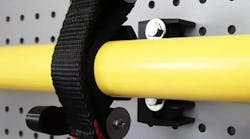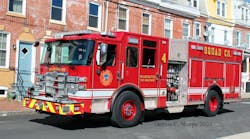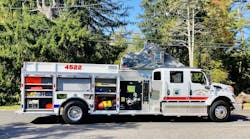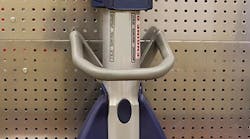What is carbon monoxide (CO)? It is a tasteless, odorless, invisible gas that is produced as a byproduct of incomplete combustion, or simpler said of anything that has a flame. CO weighs about the same as air (specific gravity 0.965. air is 1), so it mixes well with air. Because you can’t see it, smell it or taste it, it is often known as the “silent killer.” Exposure to lower levels can make you sick; higher levels can become fatal. The following commonly asked questions and their answers can serve as a guide for fire safety educators when making presentations to the public about the dangers of CO.
What makes carbon monoxide so dangerous?
The hemoglobin in the blood stream is what carries gases, mainly oxygen (02) and carbon dioxide (CO2). But it would much rather carry carbon monoxide, 200 times that more than oxygen. Once in the blood stream, it produces a toxin known as carboxyhemoglobin (COHb). Carboxyhemoglobin produces flu-like symptoms at first such as headaches, fatigue, nausea, dizzy spells, confusion and irritability. Because the symptoms are similar to the flu, many people suffering from CO poisoning are unaware and blame it on the flu. As levels of the COHb rise, the victim may begin to vomit, and evidentially loss of consciousness. If corrective action is not taken immediately, death is imminent.
Who is at risk for CO poisoning?
Everyone can suffer the effects of carbon monoxide. Experts believe some people are more vulnerable to CO poisoning, including unborn babies, infants, children, seniors and people with heart and lung problems.
What are some common CO producers in the average home?
Anything that uses a fuel or has a flame produces carbon monoxide. Propane, butane, natural gas, gasoline, kerosene, diesel fuel, white fuel, camping fuel, heating oil, charcoal, wood, leaves, paper, cardboard or clothing are just some of the examples of fuels that can produce CO. Appliances that use these fuels include: furnaces, fireplaces, barbecues, hibachis, stoves, ovens, water heaters, space heaters, generators, lawnmowers, weed-eaters, automobiles, motorcycles and camping lanterns and stoves.
Appliances such as furnaces, fireplaces and water heaters are vented to the outside of the home either by a vent pipe or chimney. In many places, a vented-hood over the stove leads to an outside vent pipe. If the appliance is not vented to the outside, or if the vent to the outside is not working properly, CO can accumulate in the home.
What are some of the common causes of CO poisoning in the home?
Furnaces are one source. Perhaps the vent pipe outside is blocked, the heat exchanger is cracked or the filters are clogged and not letting fresh air enter the furnace. Cooking for long periods while using the oven and all the burners can build up CO in the kitchen.
A closed damper in a fireplace or wood-burning stove can cause CO to stay in the home. CO can build up when using fuel-powered equipment, including generators, buffers, saws and other tools, inside a building or using outside cooking equipment in the home, including those that use propane/butane or charcoal for cooking or heating. Another source is vehicles running in the garage.
Who do CO warning devices work?
A carbon monoxide alarm is not the same as a smoke alarm, as they work on different principles. Although there are smoke alarms which have a carbon monoxide alarm built in also.
A carbon monoxide alarm triggers an alarm based on exposure to CO over time. It is designed to sound an alarm before an average, healthy adult would experience symptoms. Carbon monoxide alarms are designed to alert the occupants of the presence of the gas before it has a chance to make you sick.
With carbon monoxide, it is the concentration of CO over time that poses a threat. Since carbon monoxide displaces oxygen in your blood, it can harm you if you are exposed to either high levels of CO in a short period or to lower levels of CO over a longer period.
When installing, follow the directions on the package. CO alarms should be replaced every five years.
If a CO alarm sounds, people should be evacuated outside immediately and notify 9-1-1. For those overcome or are conscious, they should be removed to a safe place outside and given oxygen, perform artificial ventilation or C-P-R if indicated. Transport to a medical facility immediately. Advise medical staff you suspect carbon monoxide poisoning.
How can we prevent CO poisoning?
A CO alarm is a must in every home and building. Anyplace that has devices that produce CO should have an alarm. That includes fire stations. There are many sources of CO in the fire station, such as apparatus, heating devices, water heaters and boilers as well as the testing of tools and equipment. CO-producing equipment need routine maintenance just as anything else. Prevention is key to preventing CO incidents from occurring.
For more news and training on fire prevention, visit: http://www.firehouse.com/topics/prevention-investigation.





